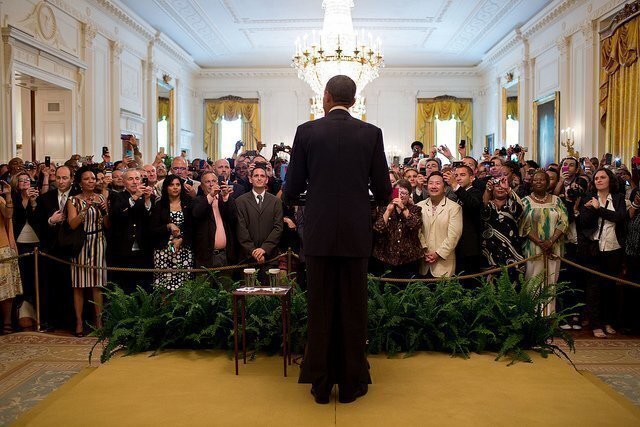
Editor's Note: This commentary is part of a series presented in conjunction with the Center’s feature exhibition, Headed to the White House.
The challenges of governing have rarely been greater. The distance between the parties in Congress and between identifiers with the parties among the public is the greatest in a century. The public accords Congress the lowest approval ratings in modern history, but activists allow its members little leeway to compromise. The inability of Congress and the President to resolve critical problems results in constant crises in financing the government, endless debate over immigration, health care, environmental protection, and other crucial issues, and a failure to plan effectively for the future.
Given the difficulties of governing, it is not surprising that Presidents typically choose a strategy for governing based on the premise of overcoming impediments to policy change by creating new opportunities through persuasion. Entering the White House with vigor and drive, they are eager to create a legacy. Unfortunately, they also begin their tenures with the arrogance of ignorance and thus infer from their success in reaching the highest office in the land that both citizens and elected officials will respond positively to themselves and their initiatives. As a result, modern Presidents invest heavily in leading the public in the hope of leveraging public support to win backing in Congress.
Of course, it is natural for new Presidents, basking in the glow of an electoral victory, to focus on creating, rather than exploiting, opportunities for change. It may seem quite reasonable for leaders who have just won the biggest prize in American politics by convincing voters and party leaders to support their candidacies to conclude that they should be able to convince members of the public and Congress to support their policies. Thus, they need not focus on evaluating existing possibilities when they think they can create their own.
Campaigning is different from governing, however. Campaigns focus on short-term victory and candidates wage them in either/or terms. To win an election, a candidate need only convince voters that he or she is a better choice than the few available alternatives. In addition, someone always wins, whether or not voters support the victor’s policy positions.
Governing, on the other hand, involves deliberation, negotiation, and often compromise over an extended period. Moreover, in governing, the President’s policy is just one of a wide range of alternatives. Furthermore, delay is a common objective, and a common outcome, in matters of public policy. Neither the public nor elected officials have to choose. Although stalemate may sometimes be the President’s goal, the White House usually wishes to convince people to support a positive action.
In sum, we should not infer from success in winning elections that the White House can persuade members of the public and Congress to change their minds and support policies they would otherwise oppose. The American political system is not a fertile field for the exercise of presidential leadership. Most political actors, from the average citizen to members of Congress, are free to choose whether to follow the chief executive’s lead; the President cannot force them to act. At the same time, the sharing of powers established by the Constitution’s checks and balances not only prevents the president from acting unilaterally on most important matters, but also gives other power holders different perspectives on issues and policy proposals.
Although it may be appealing to explain major policy changes in terms of persuasive personalities and effective leadership style, public opinion is too biased, the political system is too complicated, power is too decentralized, and interests are too diverse for one person, no matter how extraordinary, to dominate. Neither the public nor Congress is likely to respond to the White House’s efforts at persuasion. Presidents cannot create opportunities for change. There is overwhelming evidence that Presidents, even “great communicators,” rarely move the public in their direction. Indeed, the public often moves against the position the President favors. Similarly, there is no systematic evidence that Presidents can reliably move members of Congress to support them through persuasion.
The context in which the President operates is the key element in presidential leadership. Successful leadership, then, is not the result of the dominant chief executive of political folklore who reshapes the contours of the political landscape, altering his strategic position to pave the way for change. Rather than creating the conditions for important shifts in public policy, effective leaders are facilitators who work at the margins of coalition building to recognize and exploit opportunities in their environments. When the various streams of political resources converge to create opportunities for major change, Presidents can be critical facilitators in engendering significant alterations in public policy.
Recognizing and exploiting opportunities for change—rather than creating opportunities through persuasion—are essential presidential leadership skills. As Edgar declared in King Lear, “Ripeness is all.” To succeed, Presidents have to evaluate the opportunities for change in their environments carefully and orchestrate existing and potential support skillfully. Successful leadership requires that the President have the commitment, resolution, resiliency, and adaptability to take full advantage of opportunities that arise.
George C. Edwards III is the University Distinguished Professor and Jordan Chair in Presidential Studies at Texas A&M University. His most recent book is Predicting the Presidency, published by Princeton University Press.







